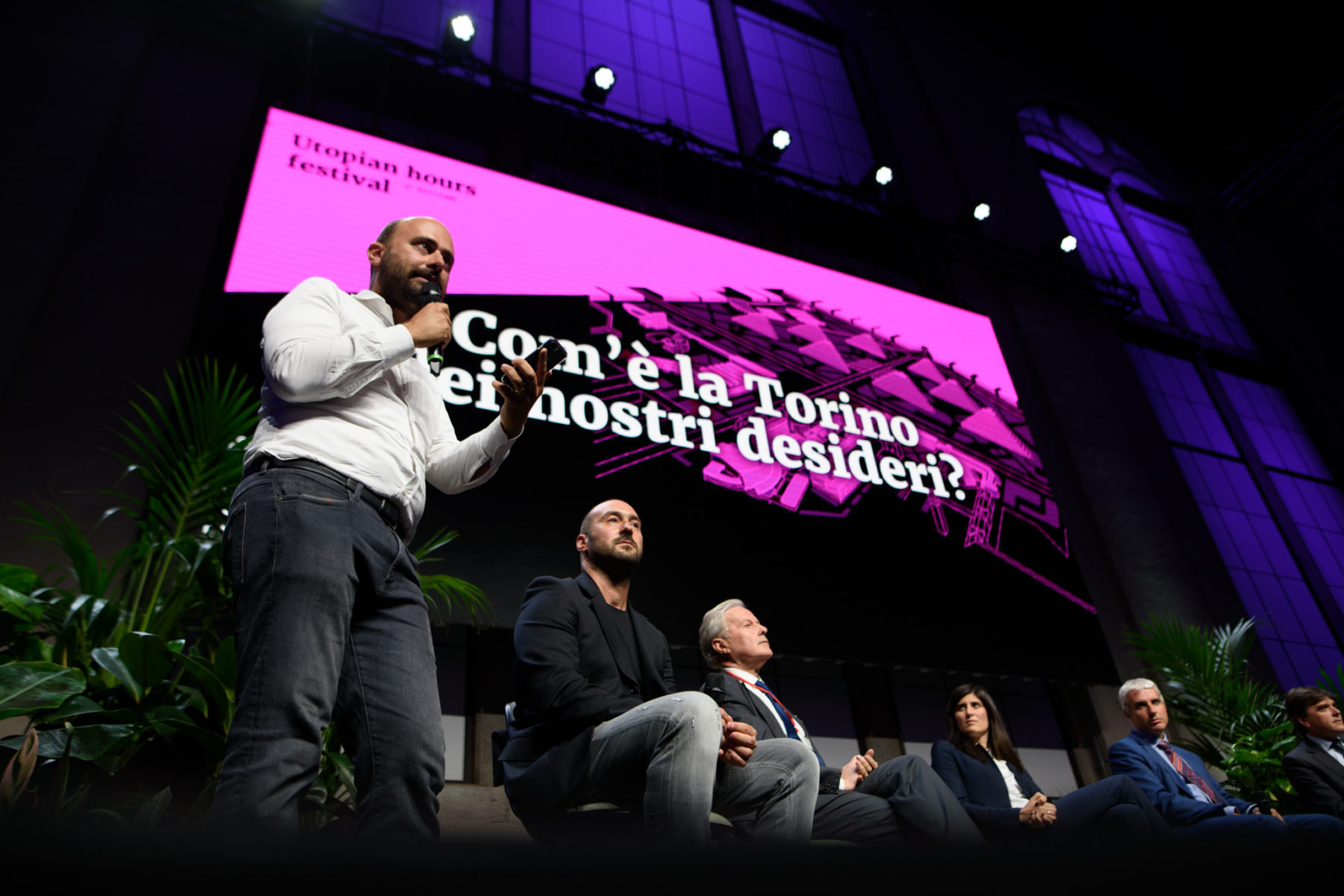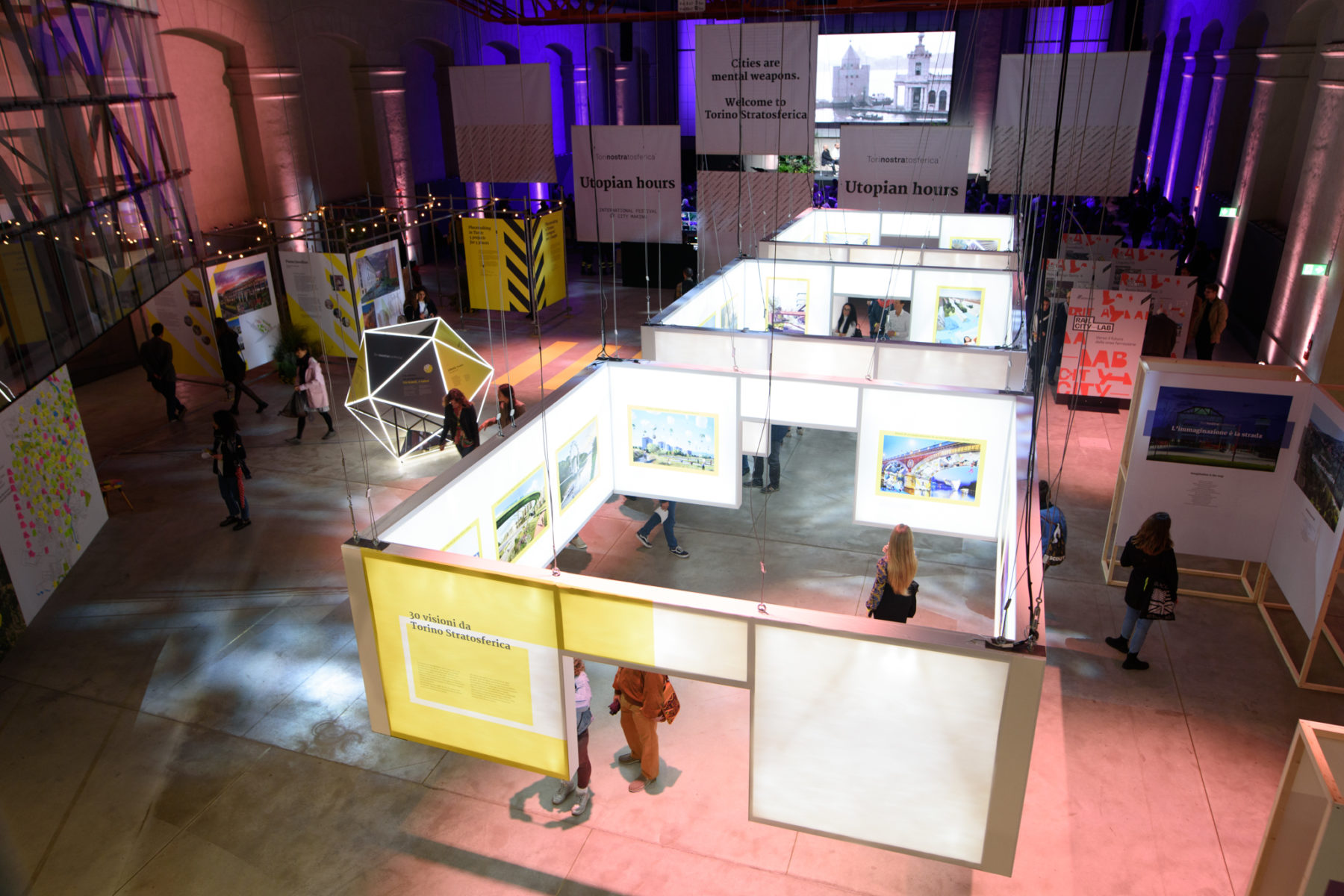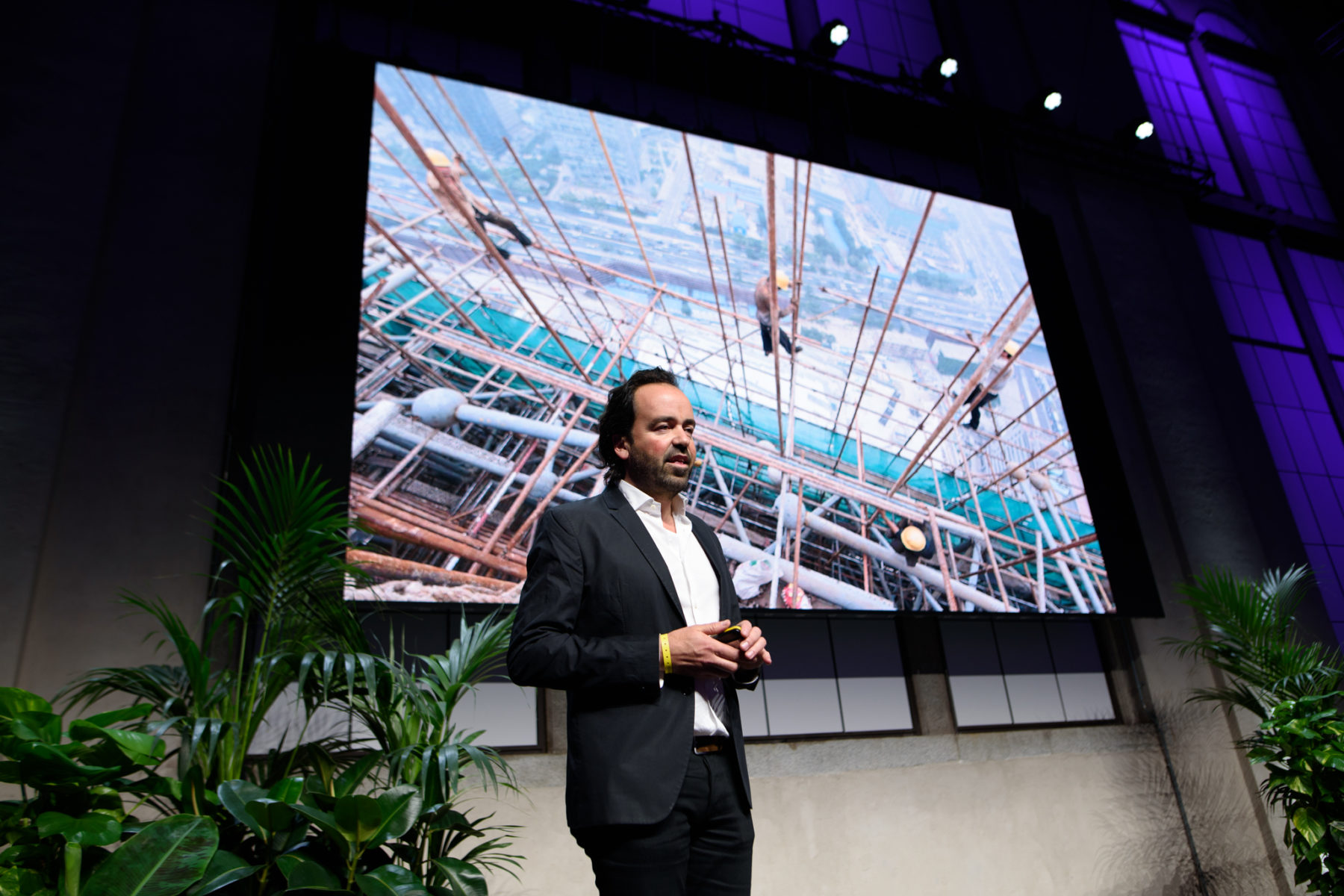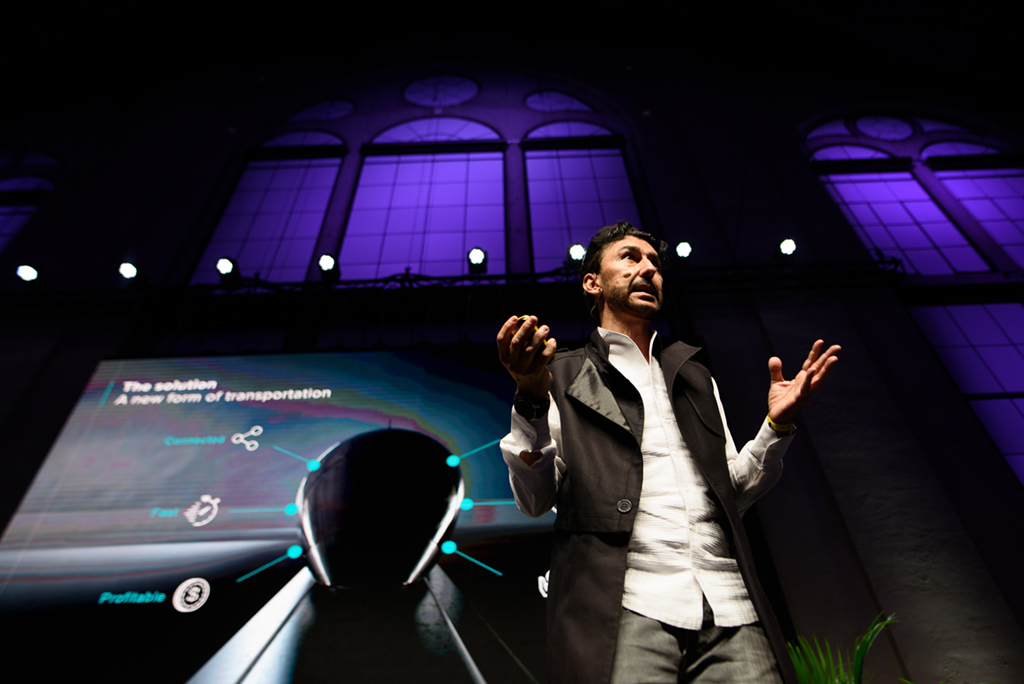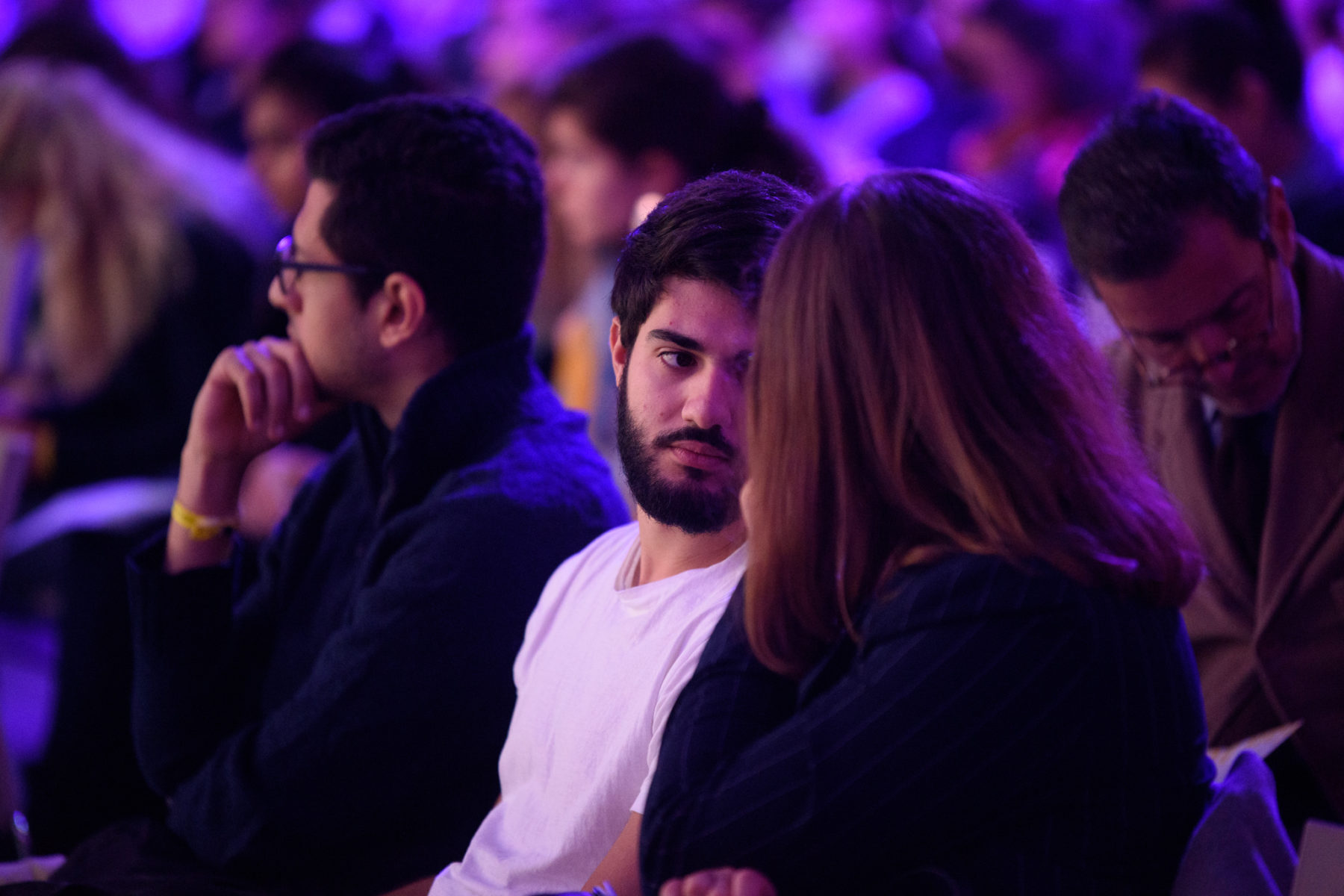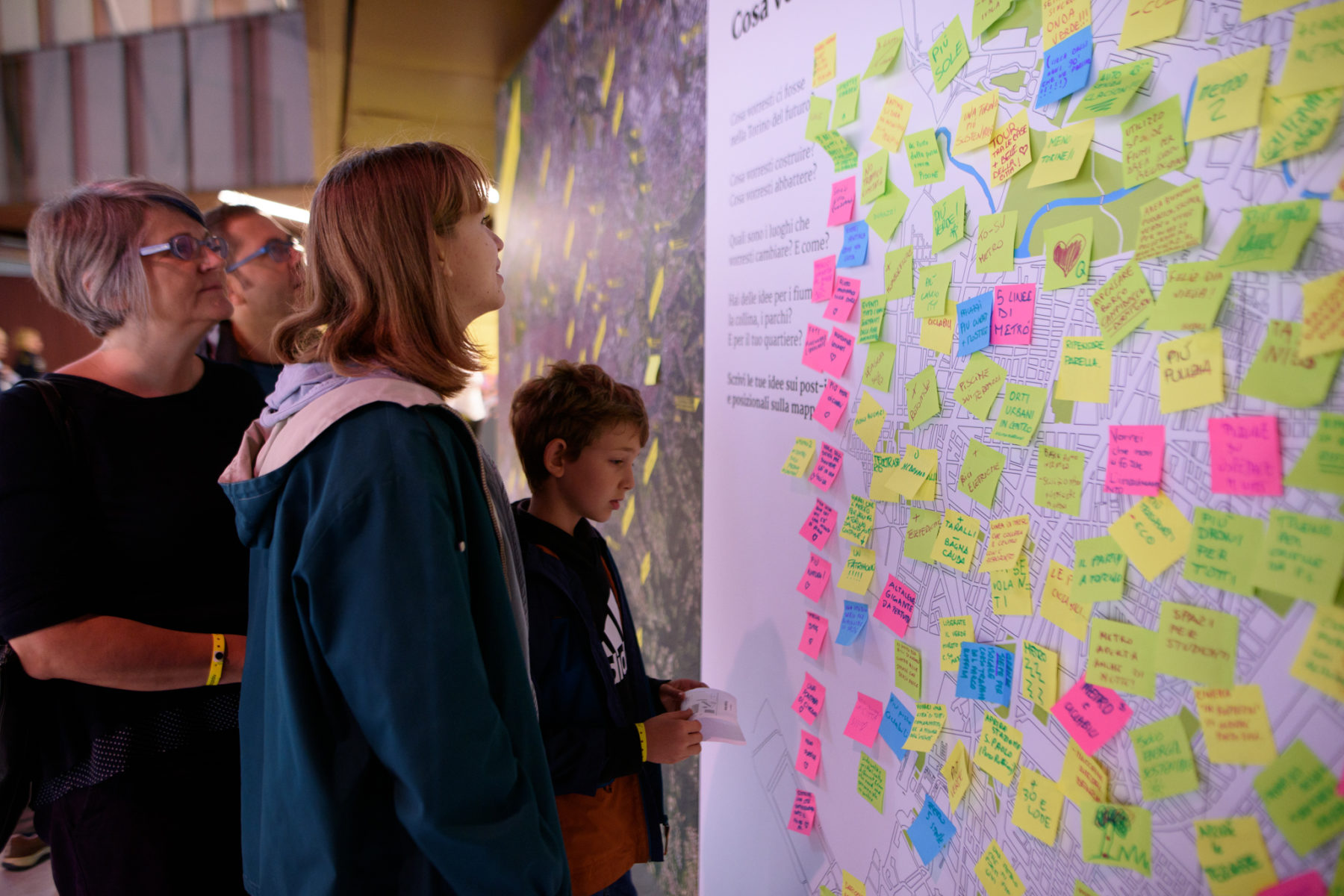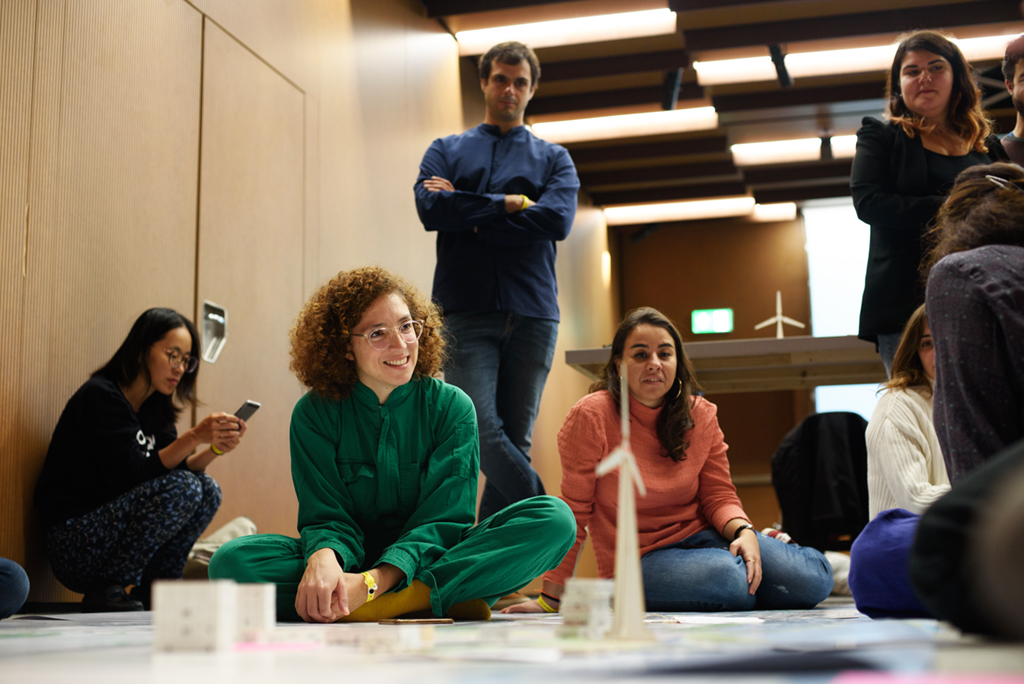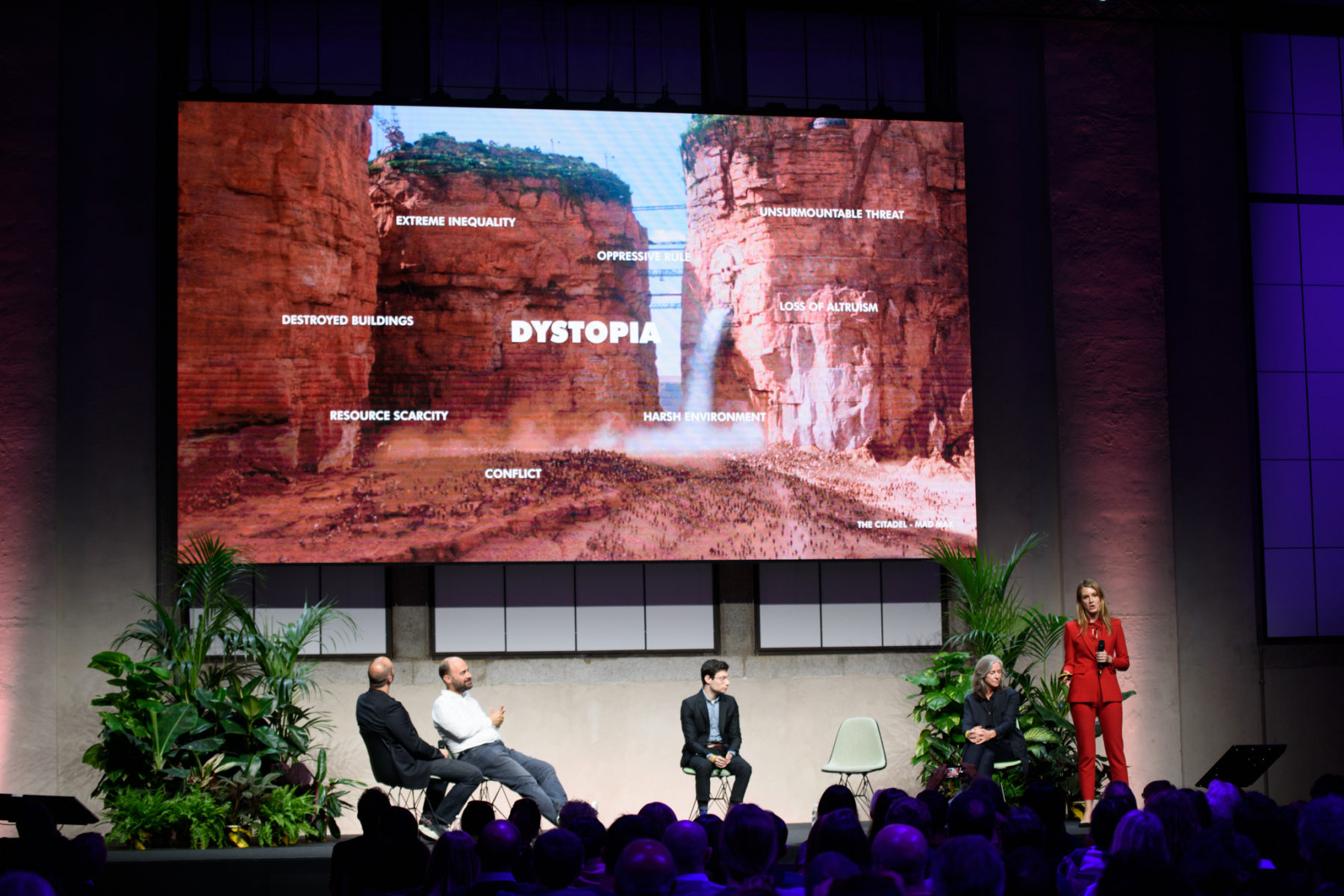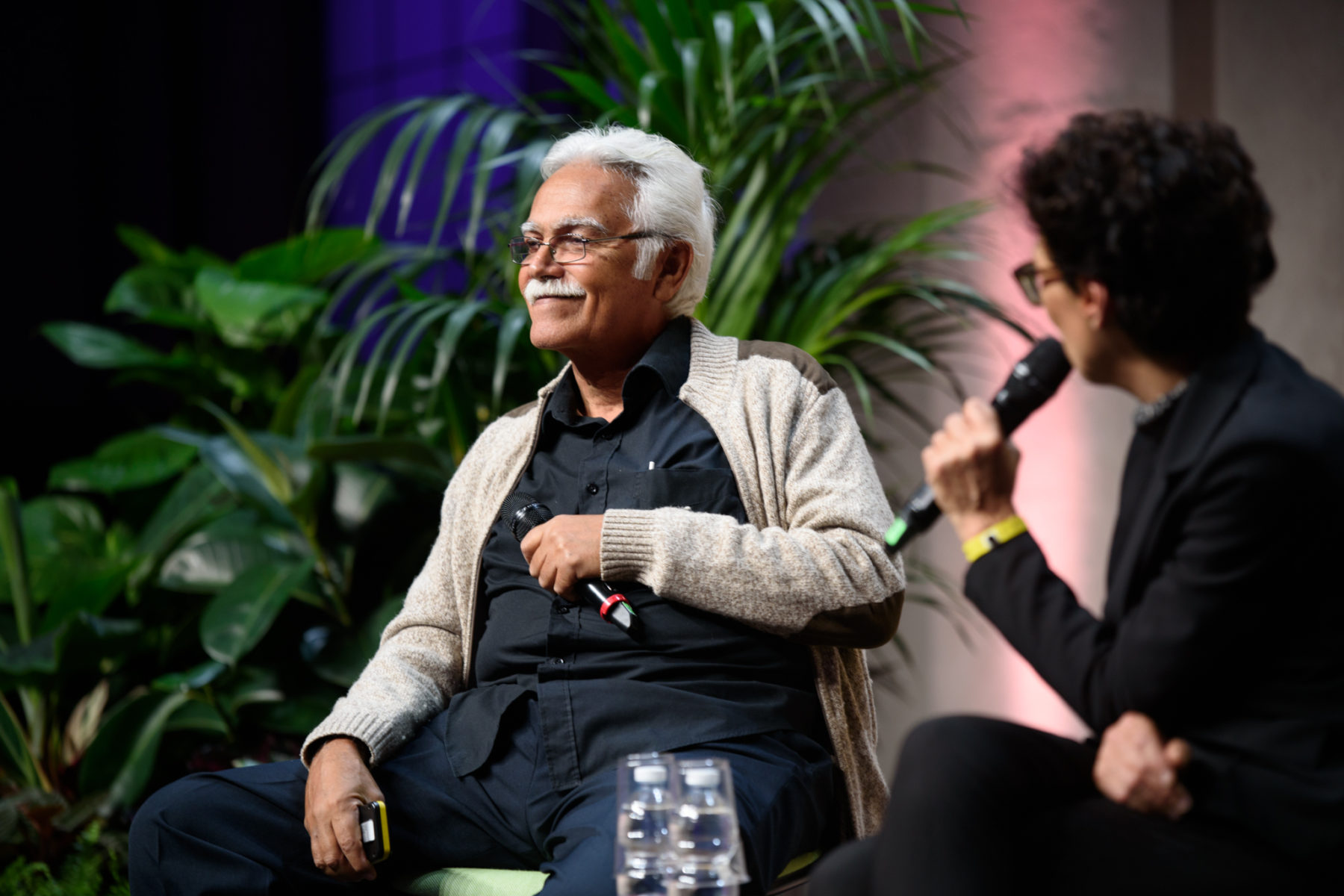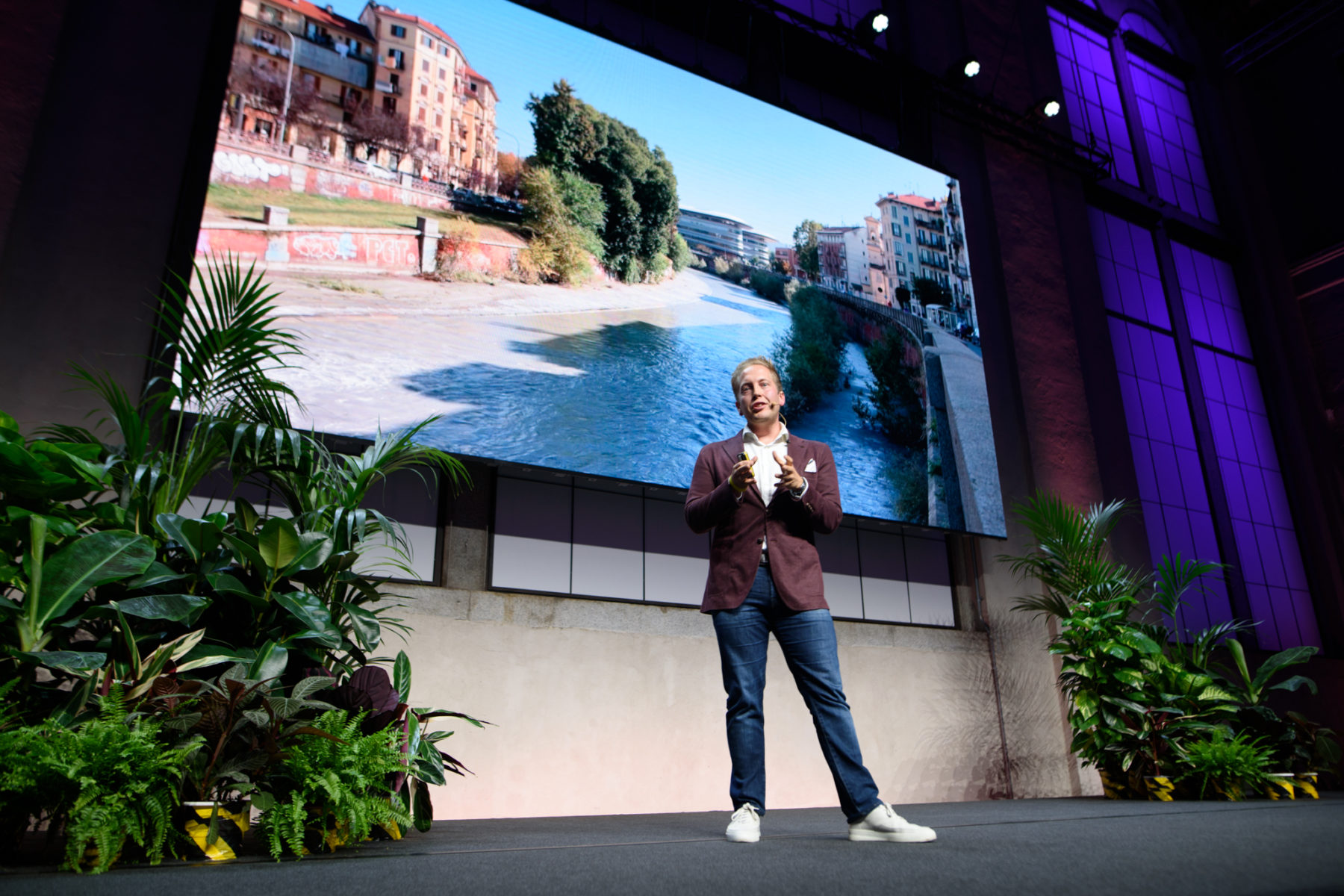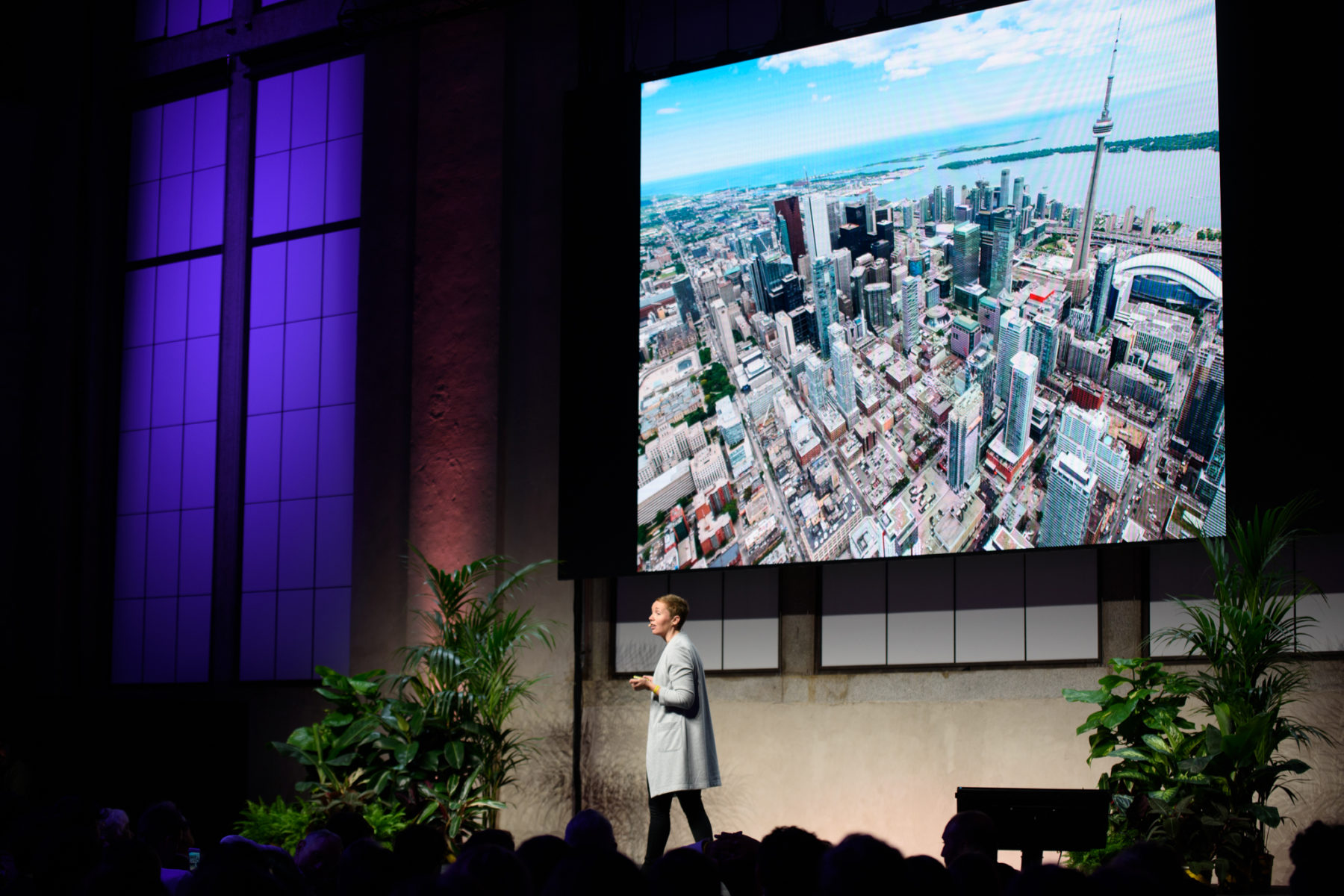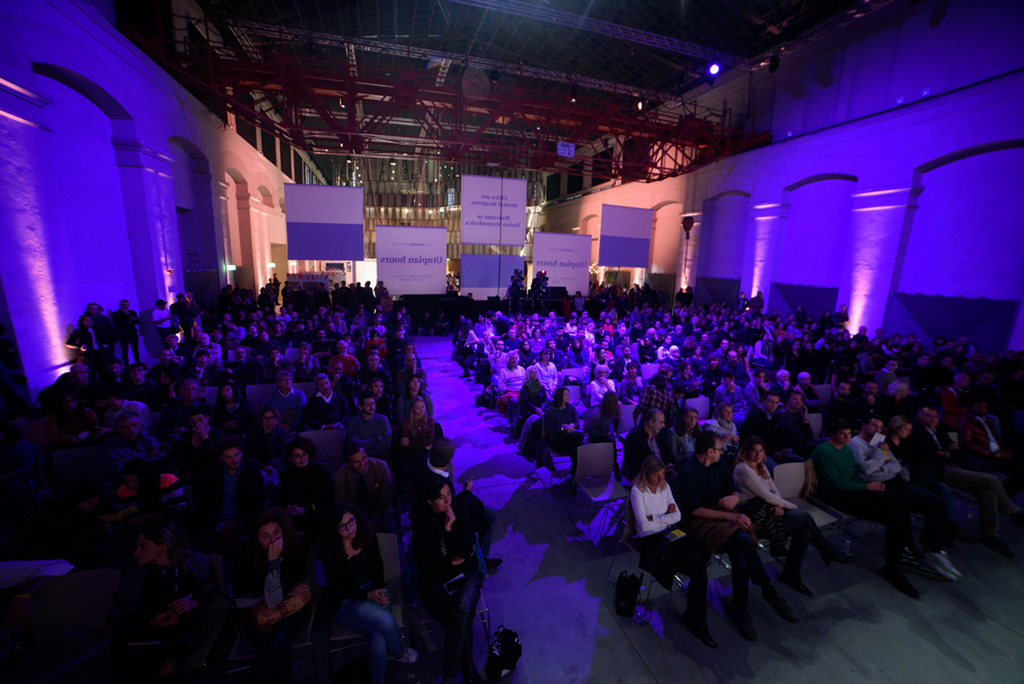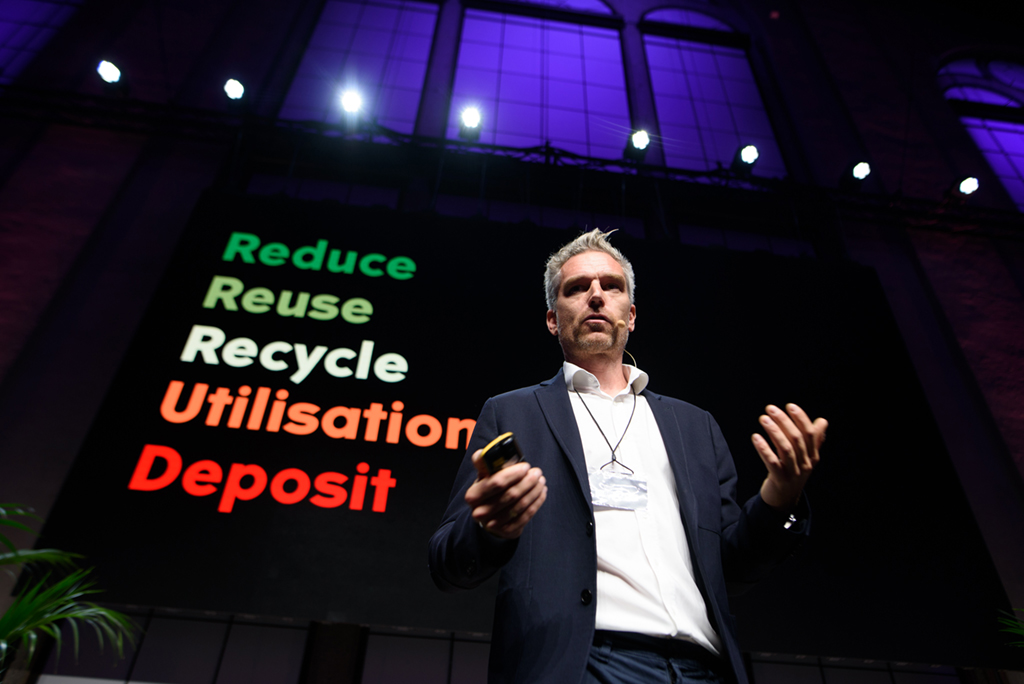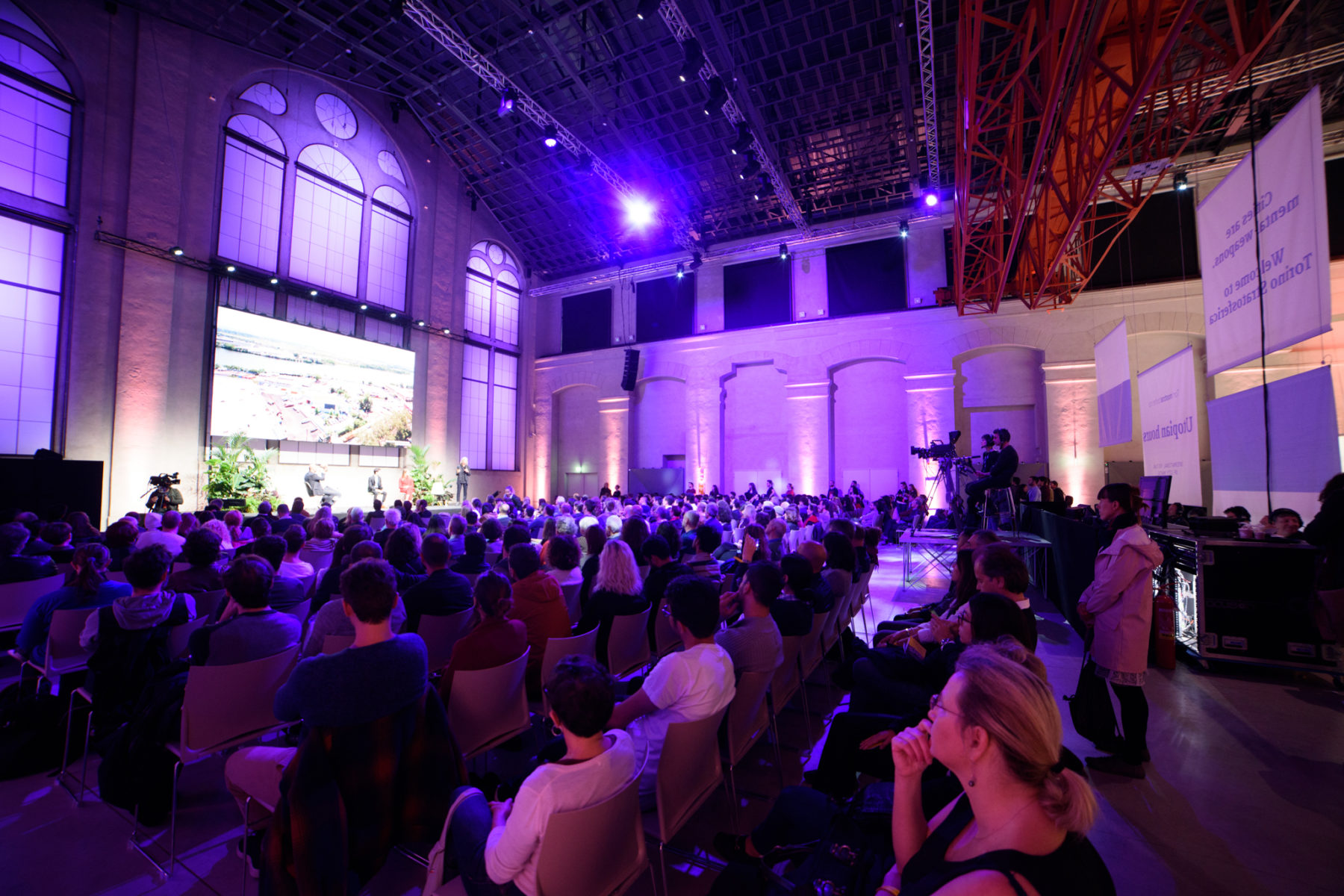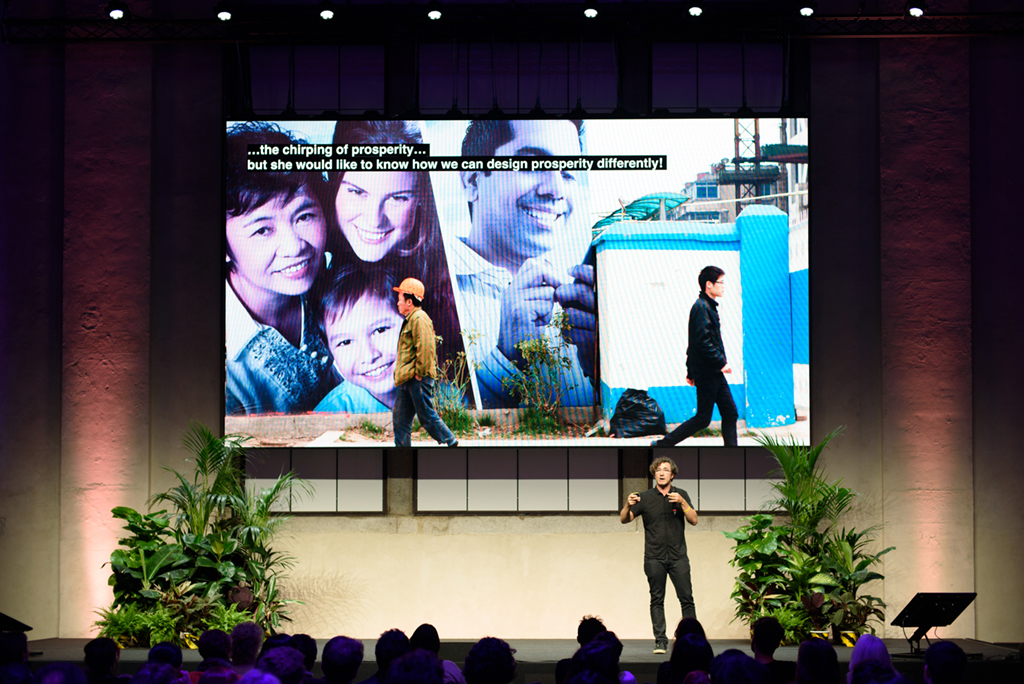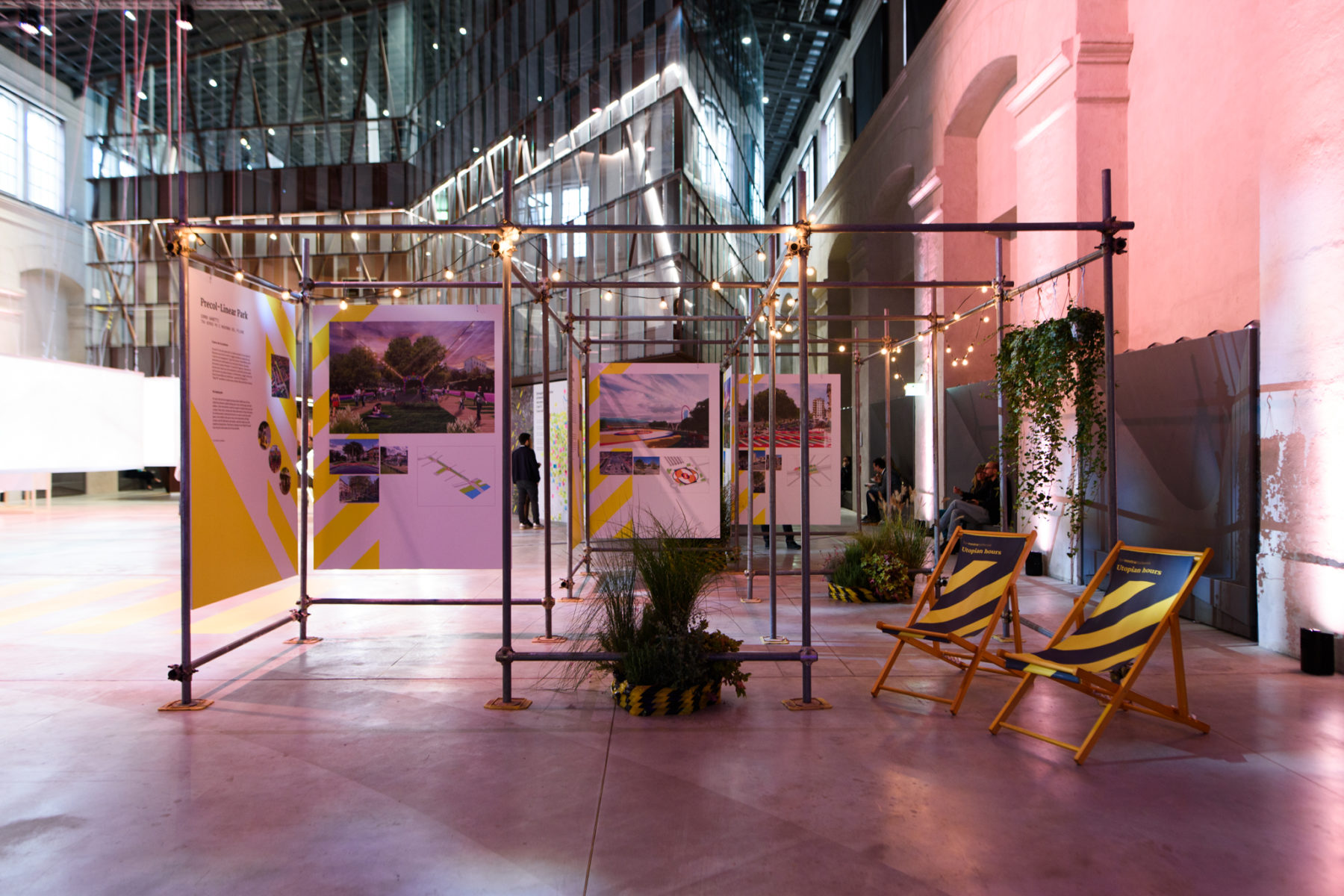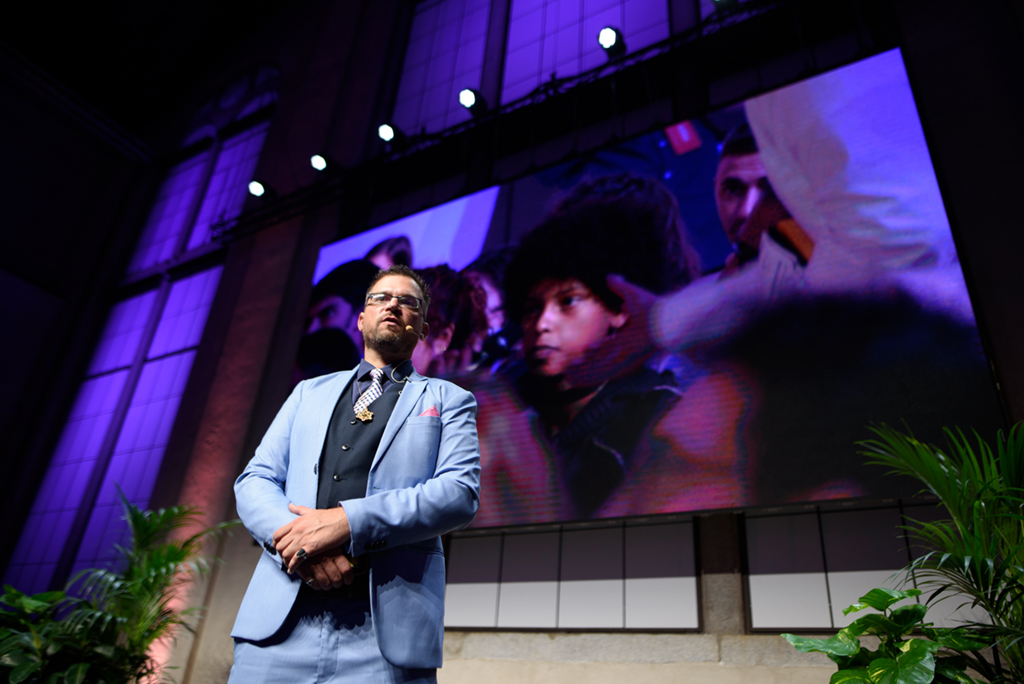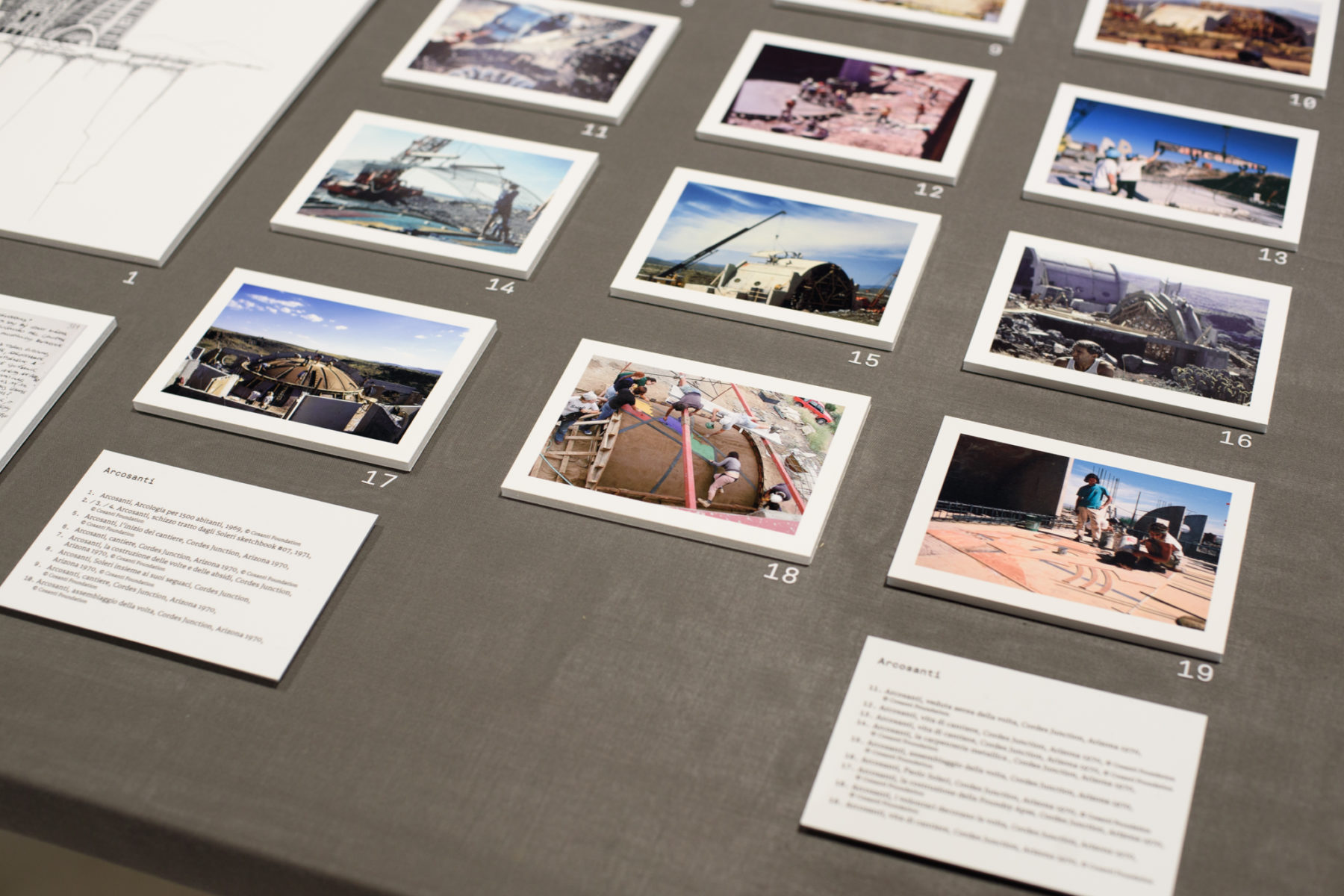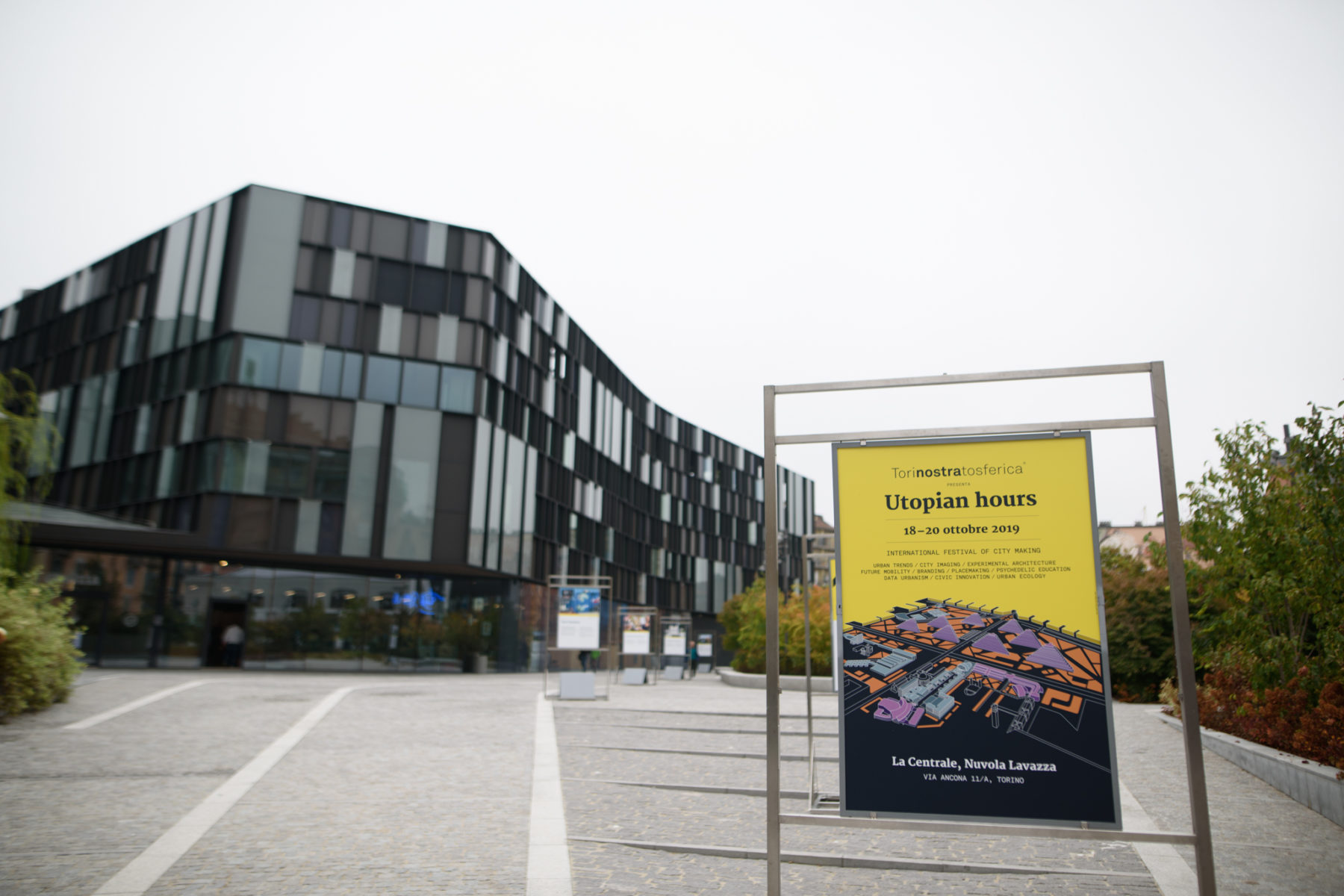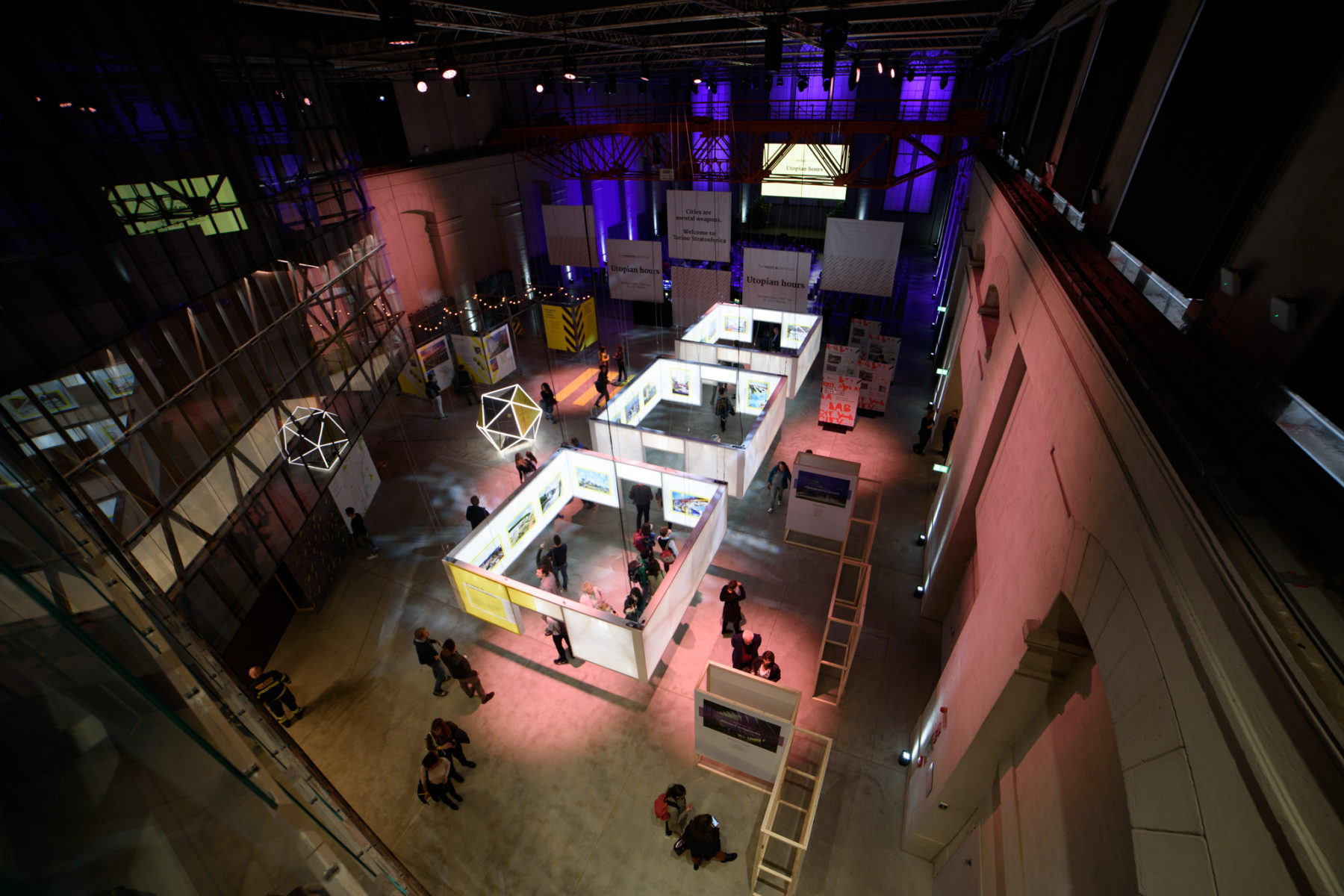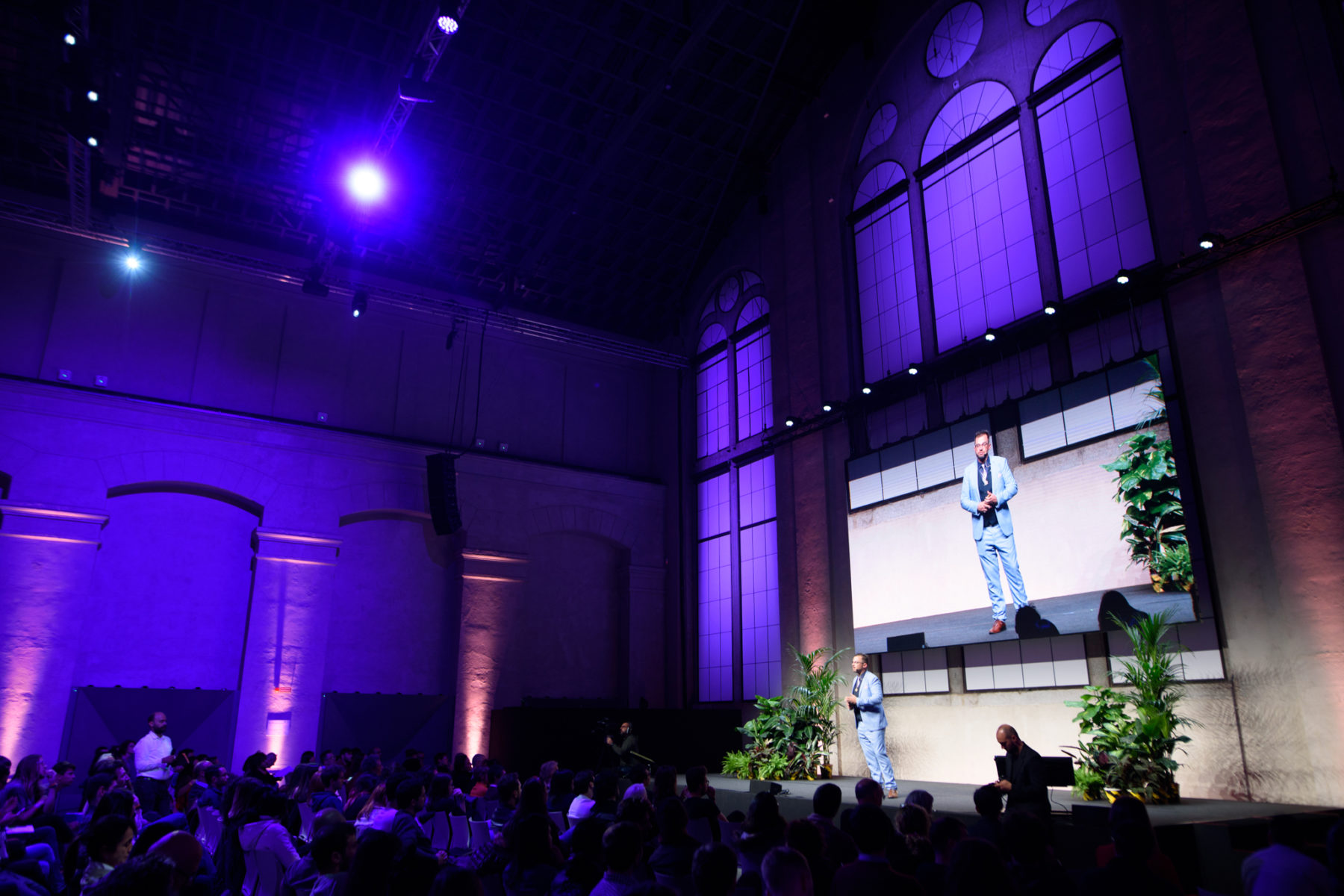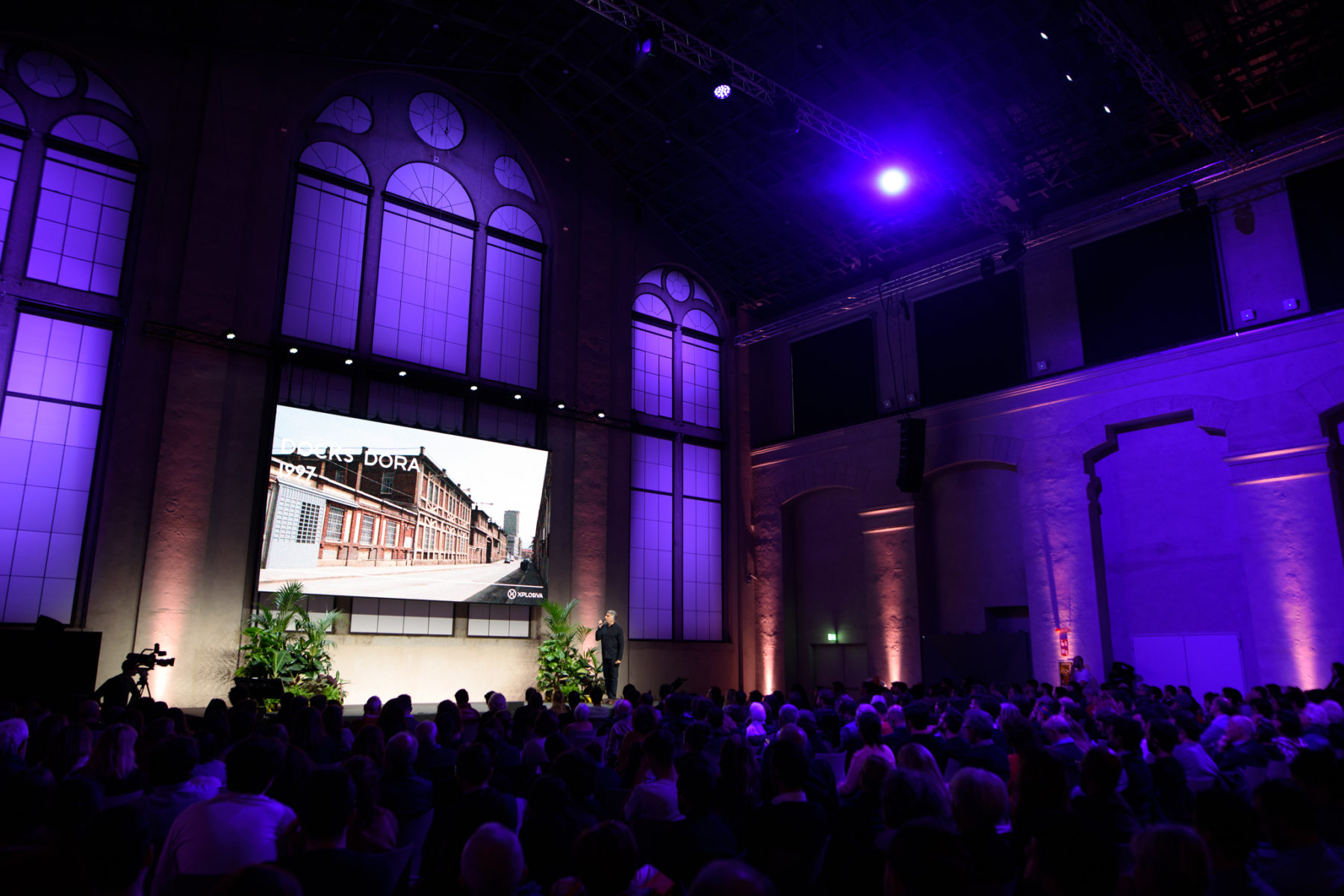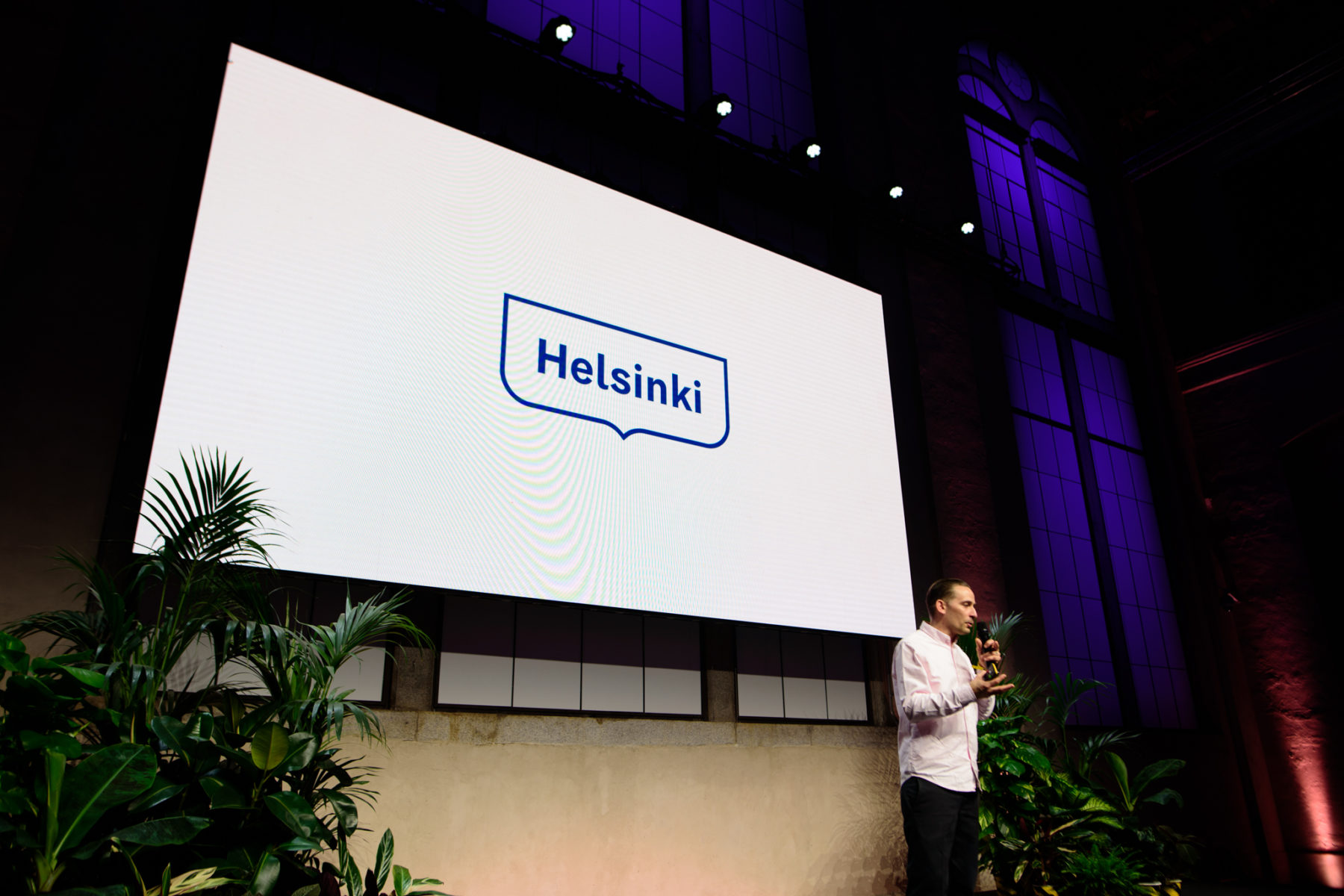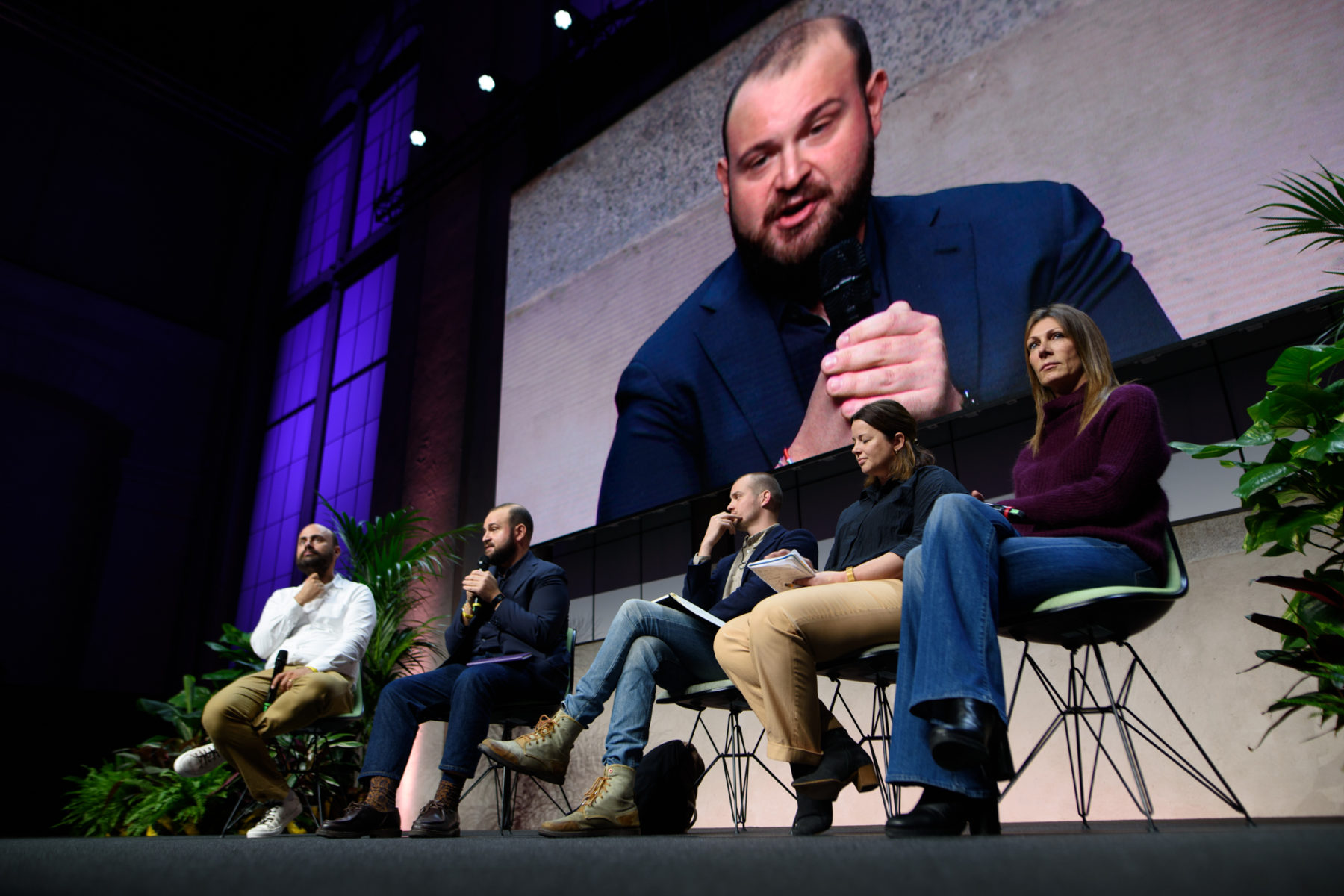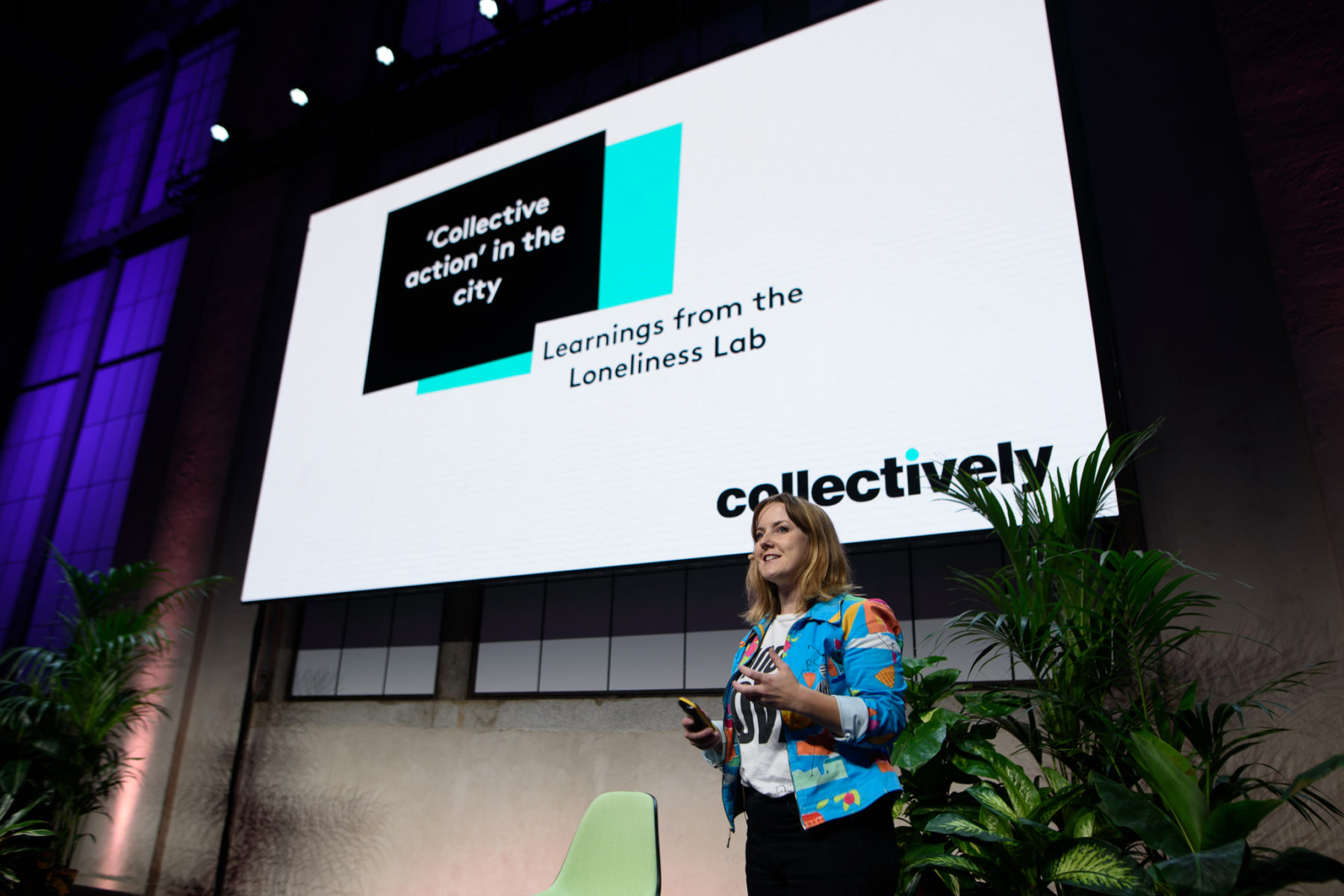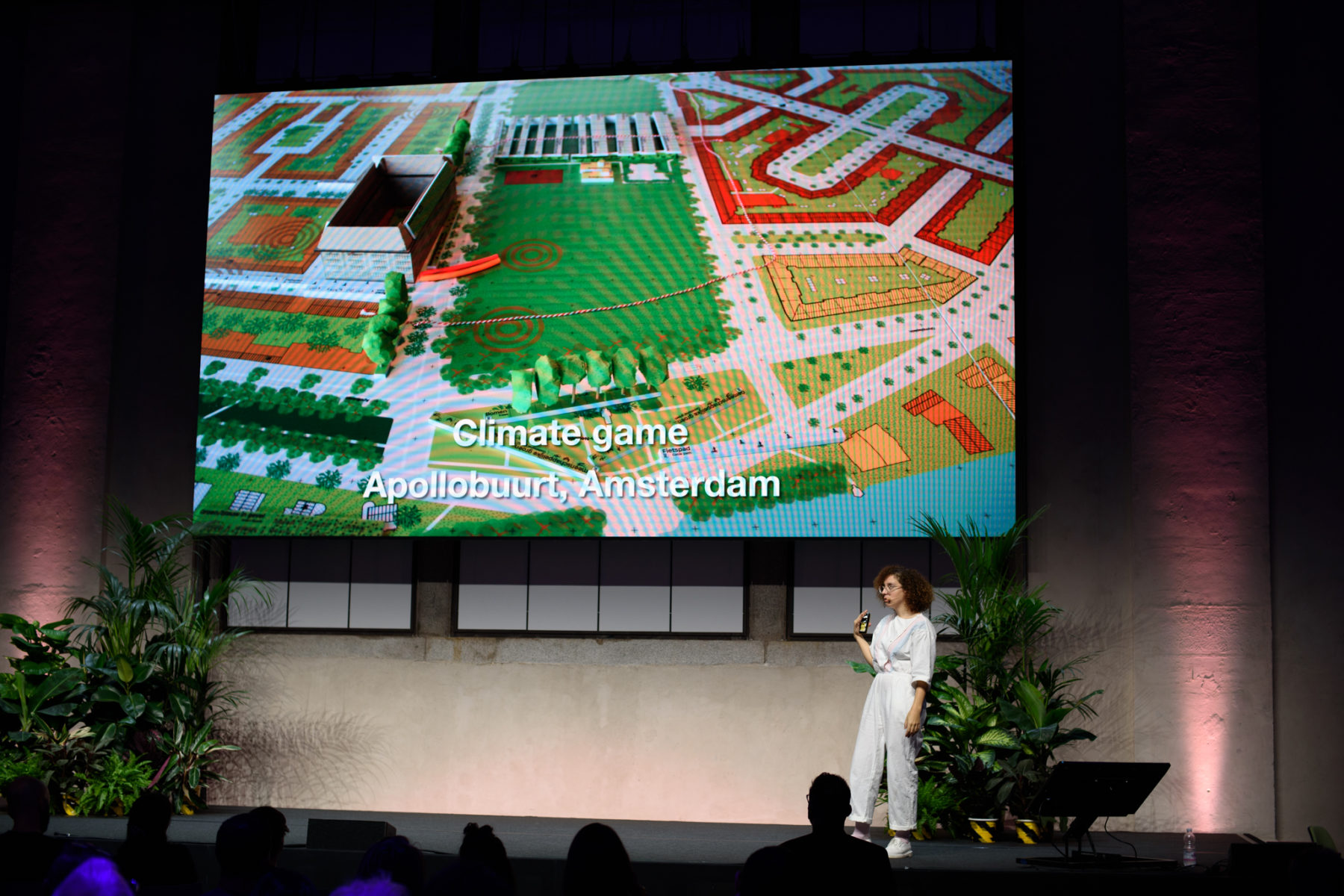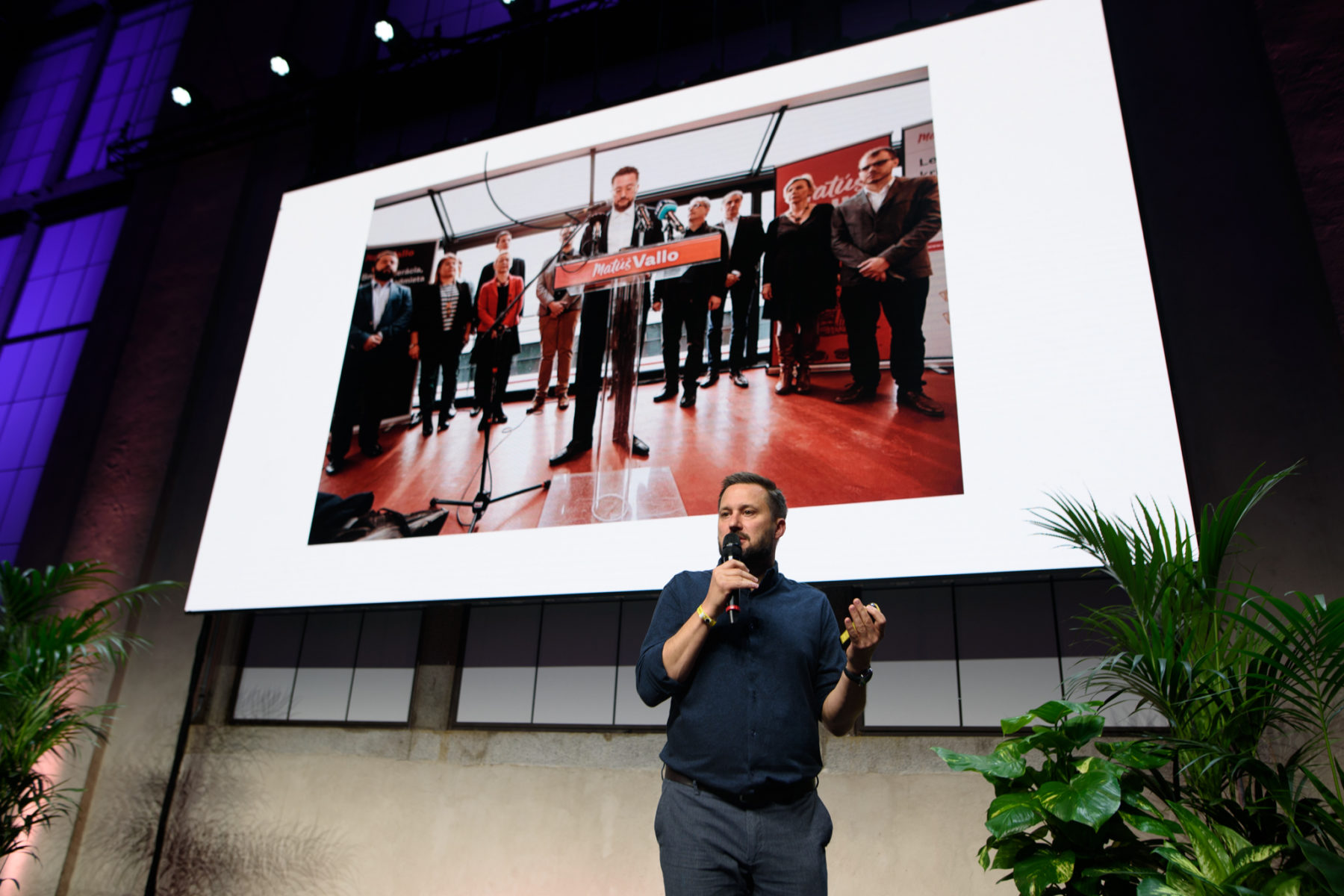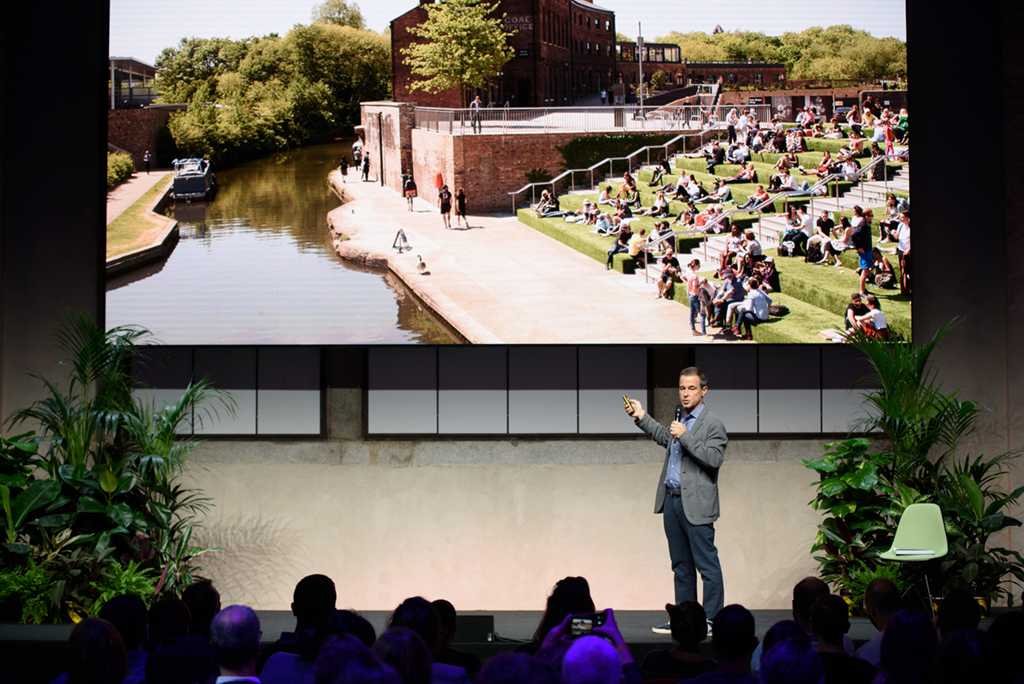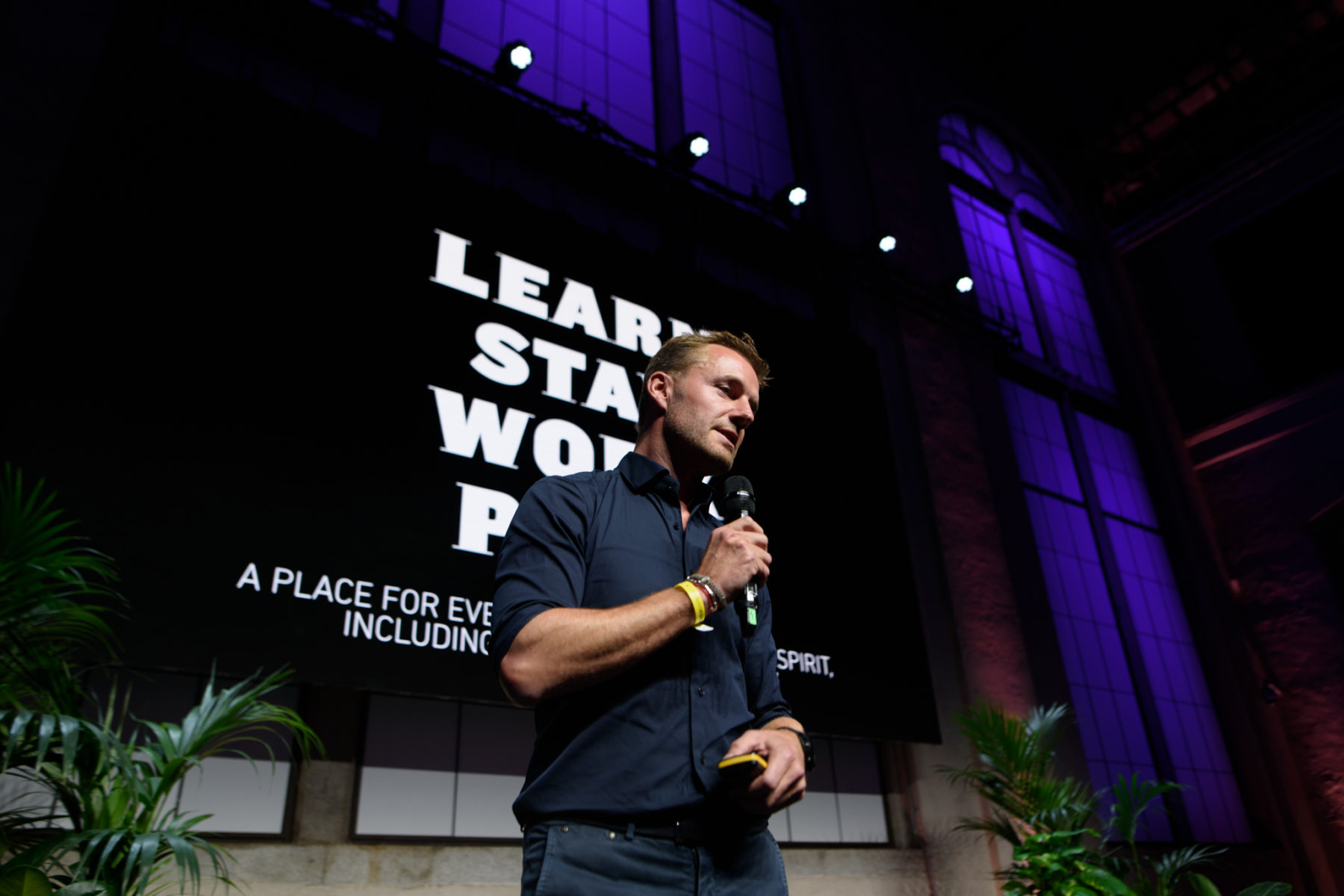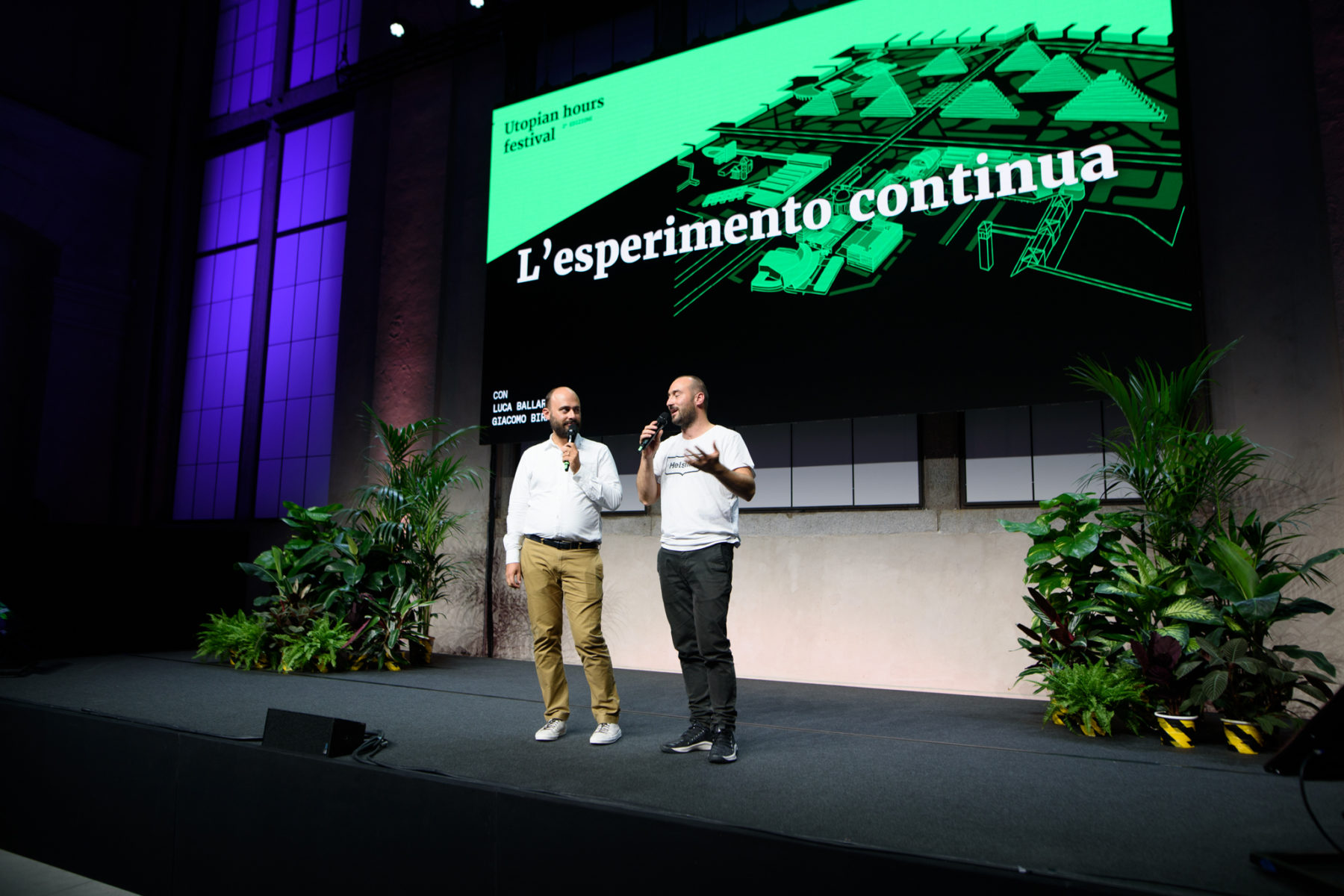For its third edition Utopian Hours selects a new location: Centrale Nuvola Lavazza, inaugurated the previous year. Between 18th and 20th October the vast areas of its events quarters, originally a late 19th century power plant, host a rich program of 25 talks with over 50 international guests and 5 exhibitions, one of which freely viewable in the venue’s garden. Across the three days the festival will see over 3,000 participants.
Friday 18th October. The opening of the festival, in the hands of Luca Ballarini and Giacomo Biraghi, relaunches the theme of utopia. The “utopian hours” are a time to imagine with courage and optimism the future of urban living: a moment of dialogue with prominent experts to get in touch with the trends, projects and innovations from cities around the world. The introductory panel comprises Chiara Appendino, Mayor of Turin, Alberto Anfossi (Secretary General of Compagnia di San Paolo), Luca Angelantoni (Councillor of CRT Foundation), Carlo De Vito (President of FS Sistemi Urbani) and Paolo Quaini (energetic services Director of Edison). The guests start with a spirited debate about the future of the city and its image. Following the discussion from the audience is also Virginia Raggi, Mayor of Rome. Two words are the keywords: resilience and innovation.
The first international guest is Bibop Gresta, future mobility entrepreneur and face of Hyperloop Transportation Technologies, one of the first companies pursuing the construction of Hyperloop, the transportation system that channels electromagnetism to move at extreme speed within futuristic tunnels. A skilled speaker, Gresta walks the audience through his vision of tomorrow’s transportation, a science-fiction-like technology with a promise of changing the relationship among cities.
The opening day’s final conference is held by Iwan Baan, the most famous modern architectural photographer, presenting a personal overview of his work. Baan’s pictures show the territory on various scales, from impressive buildings to the humanity of street life, from the wall between Mexico and USA to the floating houses in Lagos: a trip around the world, highlighting how people are able to reclaim the spaces they inhabit.
Saturday 19th October. Excitement for the audience at Centrale begins in the morning with a panel on Turin architect Paolo Soleri, to whom the festival dedicates an exhibition on the recurrence of the 100th year since his birth. The curator, critic and director Emanuele Piccardo, and architect Federica Doglio, are joined by the unscheduled appearance of architect Andrea Veglia. A passionate debate took place about the utopian thinker who, with his experimental lab-city Arcosanti, Arizona, took into account the relation between architecture and ecology decades in advance.
The festival resumes in the afternoon with Omar Lopez, the historiador of Santiago de Cuba, for a journey through the Carribean. Lopez speaks about his role of Historiador, “guardian” of the artistic and historic heritage of a place. A central figure in the economic and urban development of the Country, which is further explained with a guided journey through the atmospheres of neighborhoods in the early ‘800s and the coffee trails now opening up to an entirely new kind of tourism.
Next on the stage is Michelle Senayah. The Canadian architect and urban designer presented her The Laneway Project, a non-profit social enterprise operating on the many small laneways and secondary streets of Toronto, with the goal of transforming them into green and lived spaces. A very informative talk on the importance of place identity for the communities, and on how to change the city with great enthusiasm and scarce resources.
Saturday is also the day of the first Visiting Urban Explorer, the Torino Stratosferica format that every year invites international experts to freely explore the city, and then present their ideas and visions for a Torino at its best to the audience . Jorick Beijer, head of The Class of 2020 a university cities think tank, launches his warning: “Adapt or die”. To become a “sticky city”, a city able to attract and keep young talent, Beijer believes Torino needs to overcome the challenge of creating a wide network of university campuses.
As in 2018, Utopian Hours dedicates a panel to the most famous metropolis, New York. The moderator is Jonathan Hilburg from The Architect’s Newspaper, who together with Emily Bauer and Laurie Hawkinson, both planners working on the city, expresses his thoughts on the urban context and its next challenges. Chiefly to respond to the citizens’ social needs and adapt to the imminent climate change.
The second Visiting Urban Explorer of the year comes from Paris’ surroundings. Renaud Charles is the co-founder of Enlarge Your Paris, an informational website that invites Parisians to broaden their perspectives on the city and explore the many locations offered by “Grand Paris”. Charles perceives Torino’s potential of becoming a symbol of 21st-century cities and suggests focusing more on the communication of its natural resources, such as its rivers and large parks.
The following guest brings into the debate the psychedelic city theme. Through the heartfelt words of Kevin Matthews, one of the main voices of the Decriminalize Denver campaign, we discover how the capital of Colorado has decriminalised the use of hallucinogenic mushrooms. In western culture the consumption of substances such as psilocybin is solely considered as a form of abuse and a danger for society. Now though, Denver’s success can be a stepping stone to promote a new vision of personal freedom, compatible with the idea of an open and inclusive community.
The evening opens with one of the main guests of this edition, the Venezuelan Alfredo Brillembourg, co-founder of Urban-Think Tank. His lesson, rich in enthusiasm, concentrates on the ethical and democratic value of planning spaces that have a positive impact on the community — like in the case of cable railway and the small Vertical Gym designed by U-TT in Caracas. A lesson with a warning: it will either be good architecture, or revolutions.
The second day of the festival, continuously on the move between Europe and the Americas, ends in Copenhagen. Patrik Gustavsson is the director of the Amager Bakke Foundation, the foundation behind CopenHill, the famous waste-to-energy plant with a ski-slope on its roof. Balanced between reality and utopia, his talk walks us through the process of transforming such a visionary idea, project by BIG – Bjarke Ingels Group, in an active and functioning reality that combines an infrastructure with a place for sports, fun and sociality.
Sunday 20th October. The third and last day of Utopian Hours 2019 opens with a talk dedicated to a topic that has always been at the center of Torino Stratosferica’s experiment: city branding. Jan Rudikiewicz, lead designer and partner of the Finnish studio Werklig, explains the birth of One HEL of an impact, Helsinki’s new city image — a project that has distinguished itself internationally for its visual strength and impact.
The following talk, directed by Nesta Italia, is dedicated to social innovation. Olli Bremer (Demos Helsinki), Laura Milani (IAAD) and Jessica Bland (Nesta) discussed the topic with Marco Zappalorto: a debate on how to channel new technologies for the benefit of the communities and to overcome urban challenges, with many students in the audience.
The first topic in the afternoon is one of great value, yet rarely discussed. Bethan Harris of Collectively brings his experience with The Loneliness Lab (London), an initiative that concentrates on the sense of loneliness in the city. To tackle this ever-growing state of mind it’s necessary to rethink spaces, explains Harris, favouring connections between people and the sense of belonging.
Another experimental experience, based on urban imagination, is brought by Play the City, an organisation based in Amsterdam. Txell Blanco, who had taken part in the morning workshop “making cities by playing”, explains the potential of city gaming instruments to actively involve experts and citizens in city regeneration and development paths.
The following slot sees Michelle Senayah back on stage, a Toronto-based architect-activist with The Laneway Project, this time in capacity as a Visiting Urban Explorer. In line with her work, Senayah’s suggestions for Turin take into consideration street life, its variation throughout the different hours of the day and those small interventions that can adapt places to the way people use them: outside young childrens’ schools, for example, where there is room for innovation and improvement.
The final sequence of talks starts with an exceptional international guest, the first Mayor of a European capital to take part in the festival. Matúš Vallo, elected Mayor of Bratislava in 2018, retraces his experience first as activist and then as a candidate. Interviewed by Feargus O’Sullivan of CityLab, the architect is the demonstration of how change can be reached working together: in his work in activism, Vallo assembled a group of experts which after two years of discussions gave birth to Plan B, a book of proposals for the city and the base of his electoral campaign.
The evening continues with an engaging panel with one of the main voices of Monocle, the influential global magazine. Andrew Tuck, editor and curator of the program The Urbanist on radio Monocle24, walks the audience through a talk rich in urban sensitivity and suggestions on how to build and take care of better places. A speech that is both a lesson for city makers and a personal overview by a real city lover.
The third edition of the festival closes with Charlie MacGregor, Ceo of The Student Hotel, the Amsterdam born company ーnow present in several European citiesー that with its buildings proposes a new model of university residence and hotel, in which the student and tourist communities can join in co-working and leisure areas. The final talk is the best opportunity to confirm that The Student Hotel is planning to open a location in Torino in the following years.
The exhibitions. As it is custom, the festival is the moment in which the cultural spreading activity of Torino Stratosferica is expressed also via the set up of exhibitions and installations. In this third edition the spaces of the Centrale Nuvola Lavazza host five different exhibitions which, on different scales, explore the relationship between the society and cities, from global trends to local projects in the neighborhoods of Torino.
In the outdoor garden Urban Times, a selection of important themes and emerging trends curated by Torino Stratosferica can be freely visited: an insight on the major challenges and evolutions on the horizon for our urban species in twelve “steps”, among environment, technology and community.
The Placemaking in Turin: 5 projects for 5 places exhibition displays, for the first time, some realistic proposals for Torino. Five projects of regeneration meant for the community, born in a collective gathering and developed by Torino Stratosferica, for as many neighborhoods (Barriera di Milano, Borgo Po/Madonna del Pilone, Borgo San Paolo/Cenisia, Lingotto). Each one channels creativity and urban design to re-invent spaces with great potential: amongst them is Precollinear Park, which will become reality in 2020.
A large map of Torino invited the audience to make notes on proposals and topics for a city of their dreams.
As well as the many other contents generated by the city imaging laboratory of Torino Stratosferica, the vast ground floor areas host the contents by Rail City-LAb, an exhibition by FS Sistemi Urbani dedicated to the community owned areas in Torino and the transformations they imagined for them.
The upper floor is dedicated to Paolo Soleri’s work with an exhibition curated together with the architecture critic, Emanuele Piccardo, and in collaboration with the Cosanti Foundation. The exhibition, on the 100th year anniversary of the birth of this visionary figure, born and educated in Torino, retraces the steps of the thinker and planner through images and video. Soleri is famous for his arcologie, lab-city in which architecture and ecology merge into experimental design systems, decades prior to the first environmental debates. In Arizona his pilot experiment is still active: Arcosanti, a community foreshadowing a different model of living — once again straddling utopia and reality.
